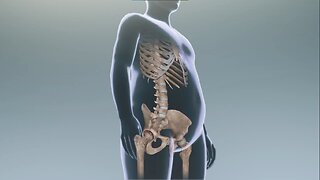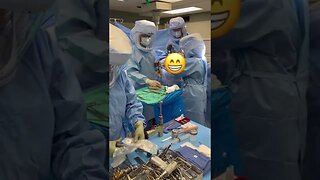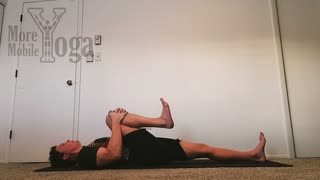Total hip replacement part 2 hip - human animated anatomy
total_hip_replacement_02_hip_biomechanics
===
[00:00:00] Hello, my name is Dr. Tom Van Orna. I'm a doctor of physical therapy and a sport performance specialist. I'm going to walk you through the biomechanics and functional movement of the hip joint femoral acetabular anatomy allows for three degrees of freedom, sagittal plane flexion, and extension, frontal plane, abduction, abduction, and transverse plane, internal and external rotation.
In the sagittal plane, the hip can usually flex to 140 degrees. This is crucial for the mid-stance and swing through portions. As well as for squatting, the hip should extend to 15 degrees. This is needed for the push off and terminal hip extension phases of gait. In the frontal plane, the hip should be able to abduct to about 45 degrees and adduct to about 30 degrees.
Maintaining adequate hip abduction during single leg stance and avoiding excessive collapse into hip abduction is crucial for healthy hips and. Poor control of single leg stand stability results in increased compressive forces through the weight-bearing portions of the hip and knee, which can result in a [00:01:00] generation over time in the transverse plane, the hip should be able to internally and externally rotate about 45 degrees in each direction.
Adequate hip transverse plane motion is essential for reciprocal motions in the body, such as walking, running, and rotational sports like baseball, golf, and tennis. That brings us to the end of our discussion. Thanks so much for joining me today.
-
 2:11
2:11
janakoff
1 year agoTotal hip replacement part 3 hip - human animated anatomy
60 -
 1:31
1:31
janakoff
1 year agoAnimated human body anatomy of hip labral tear part 2 hip
10 -
 7:58
7:58
BobandBrad
9 months agoTotal Hip Replacement - Exercises 3 Months - 1 Year After Surgery
348 -
 0:16
0:16
Matthew Harb, MD
2 years agoTotal hip replacement
8 -
 8:20
8:20
BobandBrad
1 year agoDON'T Make This Mistake After Hip Replacement Surgery.
71 -
 3:44
3:44
BobandBrad
7 months agoAnterior Total Hip Replacement Precautions- BEWARE!
3462 -
 0:15
0:15
Matthew Harb, MD
2 years ago $0.01 earnedTotal Hip Replacement
23 -
 11:20
11:20
GuerrillaZenFitness
1 year agoHow To Fix Hip Impingement | The 4 BEST Exercises + Assessments For The Hip
-
 9:32
9:32
MoreMobileYoga
7 months agoFix your Hip Flexors
98 -
 0:44
0:44
KATzFitnesstry
3 months ago3 MOVES TO RELEASE YOUR HIPS
44